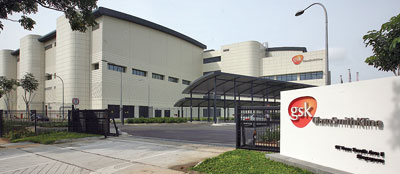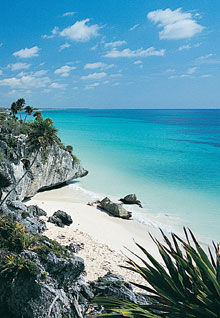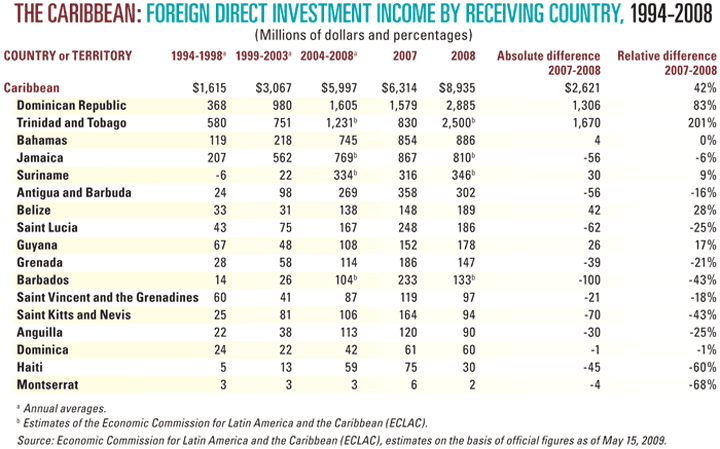
john.mccurry bounce@conway.com
s the world’s biotech leaders gathered in Atlanta in May for BIO 2009, the consensus was that the sector is in the midst of a period of major change.
“The biotech business model is under unprecedented stress,” Scott Sarazen, Ernst & Young’s biotechnology markets leader, told the audience as E&Y’s “Beyond Borders Global Biotechnology Report 2009” was released. The report cites four “paradigm-shifting” trends:
• Generics based on today’s top blockbusters should loosen governments’ and insurers’ budgetary constraints and mitigate pricing pressures on innovative drugs, permitting better margins.
• The potential shift toward universal healthcare coverage in the U.S. will likely incorporate pay-for-performance in reimbursement decisions. Incentives for true innovation should help biotech firms sustain returns.

• Personalized medicine will increase the relative value of research and early development – biotech’s traditional strengths.
• Growing strengths in emerging markets will facilitate creative solutions. Asian business models could provide solutions for struggling Western firms.
Another eagerly awaited report came from biotech venture capital specialist Burrill & Co., based in San Francisco. CEO Steve Burrill says the industry is going through a sea change due to a variety of factors including restructuring of capital markets and healthcare reform.
Burrill says trends affecting the industry will include greater regulatory oversight, a move toward generic biopharmaceutical and biosimilars and an increased emphasis on green technology and biofuels.
Market demand will increase in Asia and the developing world, Burrill says, with R&D continuing its migration to Asia. China and India will dominate growth markets with their large populations, growing wealth and middle class and increased demand for high quality healthcare.
Other growth markets will be the Middle East, Latin America, South Africa, Russia and Eastern Europe. Burrill says that China, currently the sixth largest pharmaceutical producing country, will become the third largest by 2013.
The market for medical tourism, which in 2008 was about $60 billion, is expected to grow to over $100 billion by 2010.
he French ambassador to the U.S., Pierre Vimont, was among the international officials on hand at BIO 2009. He says the French government is pursuing a policy emphasizing cooperation between science and industry. France has identified biotech as a national priority, supporting eight industry clusters with €1.5 billion (US$2 billion) from 2006-2008, and an additional €1.5 billion through 2011.
The French biotech sector has about 350 companies and employs about 20,000. Vimont says France has the building blocks in place for future growth.
“France is ranked third behind Germany and the U.K. in biotech and we hope to improve that ranking,” Vimont says. “France has the most favorable R&D tax credit in Europe and clinical trials are the second cheapest in Europe.”
Burrill says hot spots for medical tourism will include India, Mexico, Singapore, Thailand and Costa Rica, where already one in five visitors is a medical tourist. Burrill says the Indian government is investing $3.6 million in tourism infrastructure.
In the future, all biotech companies will have to take a global perspective, Burrill says: “Even the smallest company will be a global player from day one.”
Scientific American offered its first Worldview Scorecard on biotech, assessing countries on factors impeding and promoting biotech innovations. Here are its top-ranked countries in five key categories:
• Intellectual property protection: United States;
• Intensity (public companies per capita, portion of overall R&D spending used for biotech): Iceland;
• Enterprise support (encouragement of startups and foreign investment): United States;
• Education/work force: Singapore;
• Foundations (general factors that can support activities at biotech companies): Israel.
Another new report assessing U.S. states’ preparation of middle and high school students for pursuing biosciences came jointly from BIO, Battelle and the Biotechnology Institute. Only states participating in the National Assessment of Education Progress science exam were rated:
Leaders of the Pack: Connecticut, Massachusetts, Minnesota, New Hampshire, New Jersey, Ohio, Vermont, Wisconsin;
Second Tier: Colorado, Delaware, Illinois, Maryland, Missouri, North Carolina, North Dakota, Oregon, Rhode Island, South Dakota, Tennessee, Utah, Virginia, Washington;
Middling Performance: Alabama, Arizona, California, Hawaii, Indiana, Kentucky, Maine, Michigan, Montana, South Carolina, Wyoming;
Lagging Performance: Arkansas, Florida, Georgia, Louisiana, Mississippi, Nevada, New Mexico, Oklahoma, Texas, West Virginia.

onstruction of the largest solar cell energy plant of its type is set to begin in the Dominican Republic next year, giving the island a prominent position in the Caribbean in terms of renewable energy.
Sunovia Energy Technologies, a Sarasota, Fla.-based developer of ultra-efficient concentrated photovoltaic systems, is building a US$200-million solar plant for the Dominican Republic’s energy department. Sunovia signed an agreement with the Dominican Republic in late 2008 to develop a 110-MW facility to supply the Parque Cibernetico Santo Domingo with its power requirements. The PCSD is a high-tech business park with a free trade zone designation whose tenants include several U.S.-based outsourcing firms such as Stream.
Sunovia is currently negotiating a final agreement with the PCSD to purchase the power from the plant, says Craig Hall, Sunovia’s director of investor relations. He says plans call for construction to begin in 2010 with completion in 2012.
“This will be our showcase facility,” says Hall. “Since we signed the deal, we have attracted interest from multiple international companies. The interest has been more from outside the U.S. than at home. Our concentrated solar cells are ideal for the extreme sunlight environment in the Dominican Republic. The Dominican Republic is very progressive on multiple fronts. President Leonel Fernandez has moved the country forward on several fronts with his leadership.”
Hall says the solar plant, which will be about one square mile (2.6 sq. km.) in size, will create a total of 2,500 jobs in the Dominican Republic and the U.S. A typical solar cell for a power panel has an efficiency of 10 to 20 percent, while Sunovia’s solar cells will have 40-percent efficiency. The Dominican Republic facility will be the largest concentrated photovoltaic plant in the world, allowing power generation at a low cost, he says. Sunovia partners with Illinois-based EPIR Technologies in development of the solar cells.
While the Caribbean is feeling the global recession, the region should position itself to benefit from the recovery, says Trevor Alleyne, the International Monetary Fund’s division chief for the English-speaking Caribbean.
“The entire Caribbean obviously has not been able to escape the brunt of the global financial crisis,” Alleyne says. “It is highly exposed to developments in the global economy. Those that are tourism-dependent have been hit. The decline in consumer activity in the U.S. and in Europe has resulted in a decline in demand for tourism services. It has been equally difficult for commodity producing nations such as Trinidad and Tobago, Jamaica, Suriname and Guyana.”
Alleyne says a huge oversupply of aluminum, coupled with big declines in prices, has resulted in plant shutdowns, and has been an acute problem in Jamaica.
But investment did continue in 2008, at least in two Caribbean nations. A recent report by the Economic Commission for Latin America and The Caribbean, a regional commission of the United Nations, indicates the Caribbean actually experienced a spike in FDI during 2008 with a 42-percent increase. The ECLAC says this was due directly to investments in the Dominican Republic and Trinidad and Tobago.
Further hurting the region is the decline in remittances from migrant workers in the U.S., Canada and Europe, Alleyne says. The Inter-American Development Bank reports that remittances began declining in late 2008, and that trend is continuing in 2009. Alleyne says a number of countries in the Caribbean are dependent on this influx of funds.
“While all of the countries in the Caribbean have been hit quite harshly, to a large extent this is a cyclical phenomenon with an expected recovery,” Alleyne says. “The Caribbean will also benefit from the upturn.”

“One has to make the distinction between the global crisis and what to expect beyond the crisis,” Alleyne explains. “The countries that can ride out the crisis will be in position to take advantage of a growing global economy in 2010 or 2011. If we can put the crisis aside, we should look at what is there that holds out promise for the Caribbean.

Alleyne says there is potential for the islands to diversify from traditional tourism into education and health tourism. He suggests tourism-dependent islands try to find synergies between health care and tourism.
“We’ve seen some fledging ventures in this area, and those hold out promise and should take advantage of our proximity to the North American market,” Alleyne says. “By and large, we have a relatively educated population and we are English speaking. Those things suggest room for potential investment and potential value added in the Caribbean.”
Economic progress can come in other sectors too. Alleyne says plans in Jamaica to expand port facilities could position the country as a transportation and logistics hub and put it in direct competition with Panama. He says the recent Economic Partnership Agreement between 15 Caribbean nations and the European Union offers promise.
“The Caribbean is getting itself in position to be able to take advantage of opportunities from access to the European market,” Alleyne says.
But the Caribbean will likely recover more slowly than other economies, Alleyne says, due to its dependence on tourism and remittances.
“As the economy rebounds and consumption rebounds, one would expect demand for tourism would lag a little bit, but at the same time, it is actually quite possible the Caribbean would benefit. Caribbean destinations are more accessible for the U.S. market.”
Site Selection Online – The magazine of Corporate Real Estate Strategy and Area Economic Development.
©2009 Conway Data, Inc. All rights reserved. SiteNet data is from many sources and not warranted to be accurate or current.